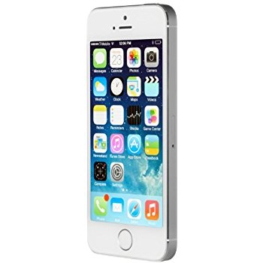In July 2012, Apple announced that it had bought mobile security firm Authentec. In a moment changed, and with this the future for the Swedish förhoppningsbolaget Fingerprint Cards and as a later consequence of the was eventually börshistoria in Sweden, when its share, multiplied in a short time and lots of small investors became very rich. Further something about the later had far more small investors lost money. In some cases very much money.
Today, there are many who believe that the FING’s decline is a single huge buying opportunity and the number of owners have in general increased for each of the bad news and decline presented in the past year. I’m not saying that it is impossible that the price can rise but think it is too bad risk/reward at these levels (30-35 usd). The basic problem I think is that too many people believe that history repeats itself. It happened once, how unlikely and fortunately it was, will happen again. But let us return to the story to understand why I do not think that you should buy today.
And with that, Apple bought Fingerprints competitor so they were more or less alone as an independent company on the market for fineravtryckssensorer. So, when the Apple a little over a year later in september 2013, released the iPhone 5S with a reader built into the home button changed smartphonemarknaden. Even if the sensors had been operating on single models in the past, it was now basically over a night necessary. For, as usual, when Apple introduces something new, got all the manufacturers with self-respect in the rush to include sensors in their premiummodeller order not to fall behind with a feature that customers appreciated.

iPhone 5S, image source: Apple
Hence arose, of course, a golden opportunity for the Fingerprint that previously plagued its shareholders for decades with losses and new issues. They were almost alone on the market (t.ex. Samsung found a different supplier) and was contacted suddenly by all of Apple’s competitors. For a couple of years from the winter of 2013/14 exploded both sales and profitability for FING that because they seemed in a seller’s market could be substantially paid by their customers. This created a bit of an absurd situation because the customers themselves seemed in a hugely competitive market with razor-thin margins for their mobiles and generally always could buy good enough components of the who offered the lowest price. Sensors were, however, as I said suddenly forced to buy, and it had to cost what it cost wanted.
Among analysts and investors in Sweden arose quickly two camps. On the one hand, those who considered the (approximately) that the Fingerprint was an amazing american success story who, of their own force managed to break through the international market, and predicted a great future as a large company with double-digit billions in profits and their ”market-leading” sensors in a number of different product. On the other hand, they, including myself, which is (roughly) considered to be the Fingerprint of a fine companies that produced good products but the reason for their sudden success was just this happy accident which has given a huge, sudden demand for the world’s by far the most sold consumer product and the sensors will soon be a standard item and lönsamhetspressade customers learn over time to both be able and willing to buy from the ”lowest bidder”.


Image source: FPC
At the same time was a, in my opinion, absurd ”management by press releases” from the Fingerprints of the management page. Because I, myself, had a good track on the smartphoneindustrin as a very committed shareholder in the Apple bothered me that they blew up to various unknown chinese manufacturers with the microscopic previous sales would choose Fingerprints sensors. This created the first image of the owners that the Fingerprint had the whole world market (t).ex. the two largest manufacturers, Samsung and Apple, which in addition was basically the only one who made a profit had you not) and ran into lots of new owners who could neither the smartphone or the stock market. The explosive development of the share was driven, of course, also on some of the older shareholders in the FING that certainly was well versed in the technology but hardly had any greater insight into how the stock market works. Everything was set up for a crash.
What happened in the second half of 2016 and year-to-date with the results and share price all know who have followed the progress – falling earnings and increased inventory levels, both with customers and in the company’s own stock, and a stock market that is increasingly sceptical of the management’s communication. The stock has gone from around 100 to around 30. Despite the fact that the company has so far not delivered according to their own forecasts still remain two schools. The one think that said this is a great buying opportunity in any combination of the following meant triggers: the course has been squeezed down by the shinier, FING will soon have a similar success with ”smart cards” with multiple products and inventory levels will soon return to normal mode. A takeover is also believed to be able to lie around the corner.
The other, which I hear, is far more skeptical. It is today obvious warnings of increased competition and margin pressure has come true, management has the longest delayed to tell you this, and that the company has manufactured and possibly income far more than it could sell. The Fingerprint is obviously skilled at finding new possible uses for their components, but the smart card is as well as other uses is very uncertain, not least because the cards are just now being integrated into our smartphones with Apple/Samsung Pay, etc., and competition will render impossible the really big profits for an individual player even if the demand picks up. Other products readers for cars, keyboard, etc are a very small market if you compare and hardly something that is going to be introduced rapidly throughout the industry. A takeover is, of course, a real opportunity to profit, for in each case the new owners but nothing you as a private investor can assess the probability.


Image source: FPC
It is popular to say that the Fingerprints of PE today is the ”under 10” and it is true, of course, if you count on the t.ex. 2016, the year’s result, but then the profit so far this year has fallen dramatically, it is not at all impossible to PE instead is very high today, which is more reasonable, count on 2017, the year’s results. On this, we know today not so much but if you buy Fingerprint now you have to do it with open eyes. Management has not delivered at all what they said it last year and then you have to be skeptical of claims that you will soon have inventory levels under control. It has also been reasonably very tight funding right now then you must pay its purchase of the american company Delta ID at the same time as sales have fallen and the layer said to have been built up. Thus, there is a risk of a new issue or that you have to take any external financing given the current development of the company is likely to be very expensive.
Certainly, thus the purchase of the Fingerprint to be successful at this level, but more likely, I think, is that it will not be there. It is so far from värdeinvestering you can get, pure speculation. It is likely that the development continues and we (again) get a halving of the course. There are lots of other exciting investments in companies operating in growing industries today whose stock price is far below the values of the company, than it högriskbolag, such as Fingerprint Cards has now become.







